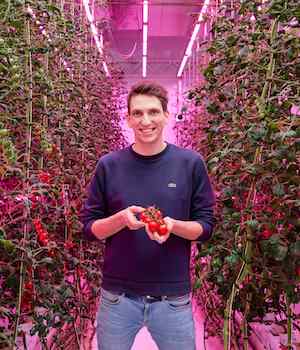Raspberry consumption across the globe has developed tremendously in the past years: optimized production methods and improved varieties have transformed raspberries into a popular fruit for fresh consumption. What if you would like to eat raspberries all year long at any location in the world? That’s where a vertical farm could come into play. In the Philips GrowWise Research Center by Signify, we explored how artificial lighting, hydroponics and precise climate control come together to optimize the growth of raspberries year-round.
Raspberries grow long stems (canes) that have a biennial life cycle. Some raspberry varieties are primocane-fruiting, yielding fruits on the new canes (primocanes) the first year in autumn and a second time on those canes (floricanes) in the second year of production in summer. Conversely, floricane-fruiting raspberries only produce nonfruiting primocanes in the first year and bear fruit exclusively on the floricanes in the following year. Our trial began with chilled primocane-fruiting young plants for the initial harvest flush. Compared to outdoor cultivation, by growing indoors we could maintain a higher planting density thanks to the precise regulation of climate, lighting, and irrigation, and by deeper light penetration into the crop canopy with our GreenPower LED interlighting solution.




